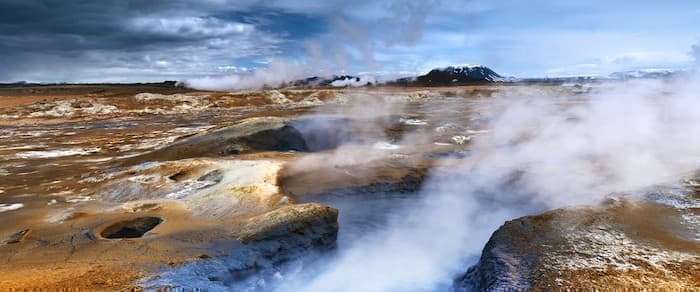What is Geothermal energy
Geothermal energy is produced by utilizing the heat from water reservoirs deep underground which has been heated by hot magma that lies close to the earth’s surface.
The majority of Geothermal resources are normally found along tectonic plate boundaries where a large number of volcanoes and earthquakes are concentrated.
There are various methods in use by geologists in locating these reservoirs, but the only way to be certain is to drill a well and test the temperature.
In the past we had been limited to fairly shallow reserves, but with recent advances in geothermal systems, which have the ability to drill many miles down and access magma (the most powerful source of geothermal energy - although current technology doesn’t allow us to utilise the heat from magma) and could lead to geothermal power generating capacity to increase by 40 times or over 100,000 megawatts. (US Dept of Energy)
Geothermal energy is environmentally friendly, clean and cost-effective. Unlike coal and natural gas-fired power plants, a geothermal power plant produces very few emissions. It’s also a very scalable technology and a large power plant can power entire cities. Now it may sound like the perfect alternative, but there are some issues. Firstly capital costs are prohibitively high and exploration of resources has significant risks.
I said above it is environmentally friendly and it is up to a point, as the fluids drawn from geothermal wells release hydrogen sulphide and carbon dioxide (greenhouse Gases) and in addition to these gases the hot water may contain trace amounts of arsenic, mercury, etc…
How does Geothermal Energy work
There are various ways to generate electricity from geothermal energy:
Dry steam plants use the underground steam to power a generator/turbine.
Flash steam plants use hot water which when depressurised quickly vaporises into steam and again turns a turbine.
Binary cycle plants use relatively hot geothermal water to heat another fluid which then vaporises driving the turbine.
Pros and Cons of Geothermal Energy:
Pros
• Almost no environmental impact
• Geothermal plants release less than one-tenth of the carbon dioxide emissions compared to a fossil fuel plant
• Capital costs are lower for Geothermal plants than similar sized Nuclear or Fossil fuel plants. Also as the source of energy already exists there are no fuel costs (unlike Nuclear and fossil.)
• It is abundant and available 24 hrs a day – unlike wind and solar energy!
• No Geopolitical issues as it’s home-grown.
• It is well proven and being used effectively right now.
• Little visual impact as it’s underground. Also Geothermal plants use relatively little space.
While it does have a lot going for it, there are still a few things still holding geothermal energy back...
Cons
• High up front costs and relatively long lead times. (3-5 years minimum)
ADVERTISEMENT
• Exploration isn’t easy as the characteristics change with the area.
• The hot steam or water can be depleted, so you can’t be certain how long a geothermal plant will be in production.
• There are environmental dangers, such as land subsidence and noise pollution. There is also the potential for dangerous gases to be released: ammonia, hydrogen sulphide,
• Geothermal energy is not transportable so its application must occur near the source.
• Rather limited potential as there are only a small number of high-quality subsurface reserves of hot water.
Despite the downsides, however, some analysts believe geothermal energy could grow six-fold in the coming decades.
Visit our homepage for the latest oil prices and energy news.


















